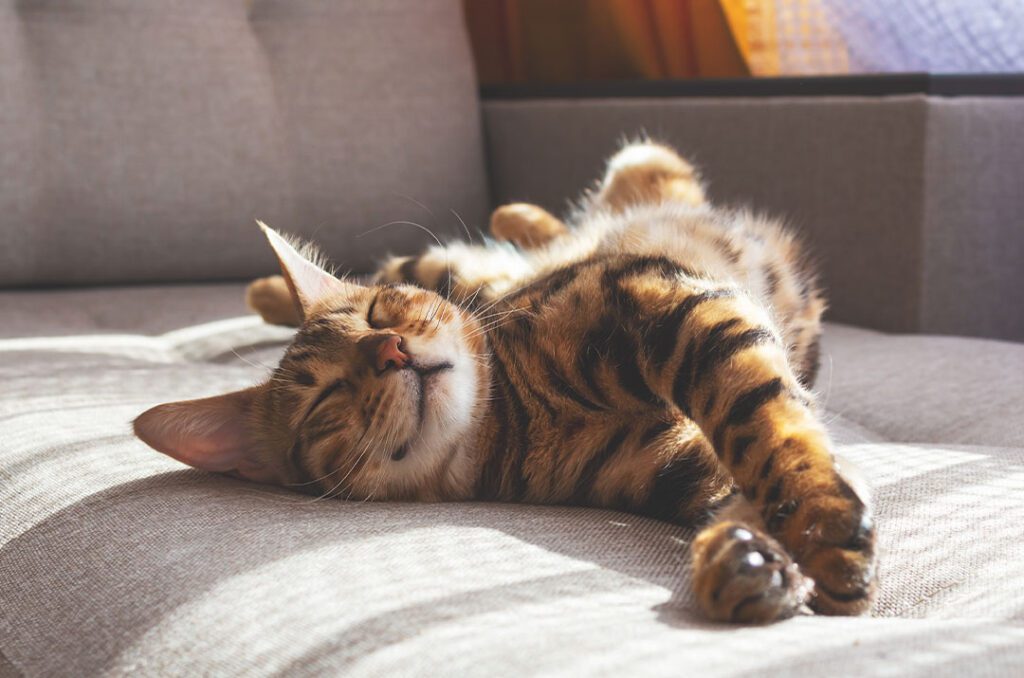
Knowing whether your cat is happy requires observation and understanding of their behavior and body language. Cats are unique individuals, and their signs of happiness can vary, but here are some common indicators that your cat is content and happy:
- Purring: Cats often purr when they’re happy and relaxed. It’s a soothing sound that can also indicate they feel comfortable around you.
- Kneading: When your cat kneads you or a soft surface with their paws, it’s a sign of contentment. This behavior is reminiscent of kittenhood when they kneaded their mother’s belly to stimulate milk flow.
- Relaxed body posture: A happy cat will have a relaxed body, with no signs of tension or fear. They may lie on their side, with their belly exposed, which shows they trust you and feel safe.
- Slow blinking: Cats show affection and trust by slowly blinking their eyes at you. If your cat does this while looking at you, it’s a sign that they are comfortable and happy in your presence.
- Playfulness: A happy cat is more likely to engage in playtime. They may chase toys, pounce on objects, or even initiate play with you.
- Appetite and grooming: A content cat typically maintains a healthy appetite and regularly grooms themselves. Excessive grooming, however, can be a sign of stress.
- Affection and head-bumping: Cats show affection by rubbing their heads against you or other objects they like. This is known as “head-bunting” and is a sign of trust and happiness.
- Vocalizations: Some cats are more talkative than others, and they may “meow” to communicate their needs or simply to get your attention. Happy meows are often softer and less demanding compared to stressed or agitated meows.
- Seeking attention: A happy cat may seek your attention and enjoy being petted and stroked. They may also follow you around the house or want to sit on your lap.
- Contented body language: When a cat is content, their tail may be held upright with a slight curve at the tip. Ears are usually in a relaxed position, not flattened or twitching in fear or irritation.
It’s important to remember that each cat is unique, and their behaviors may vary. Regular interaction, attention, and providing a safe and enriching environment can all contribute to your cat’s happiness. If you notice any sudden changes in your cat’s behavior, appetite, or overall well-being, it’s always a good idea to consult with a veterinarian to rule out any underlying health issues.

